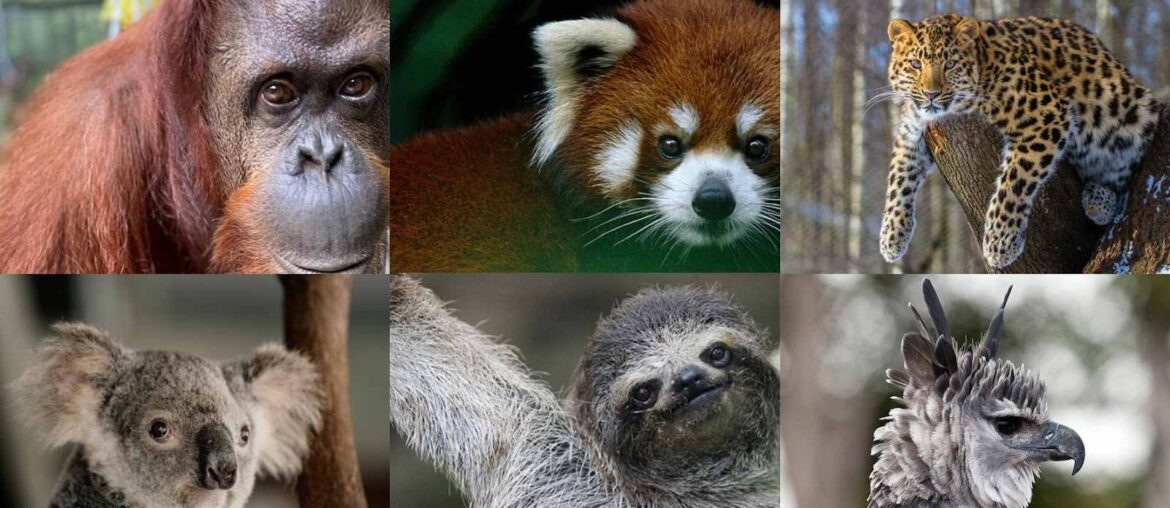The lives of many endangered species out there depend entirely on the natural environment, but not many of us seem to be fully aware of this fact, or rather just don’t care at all.
In addition to serving as a carbon storehouse as we all know, forests of all kinds also support the existence and development of many species of organisms on this planet. However, humans are exchanging this natural treasure for superficial benefits, and innocent wildlife is suffering the consequences.
If we don’t act today, the following 5 species of animals will soon become extinct because of deforestation.
Orangutan
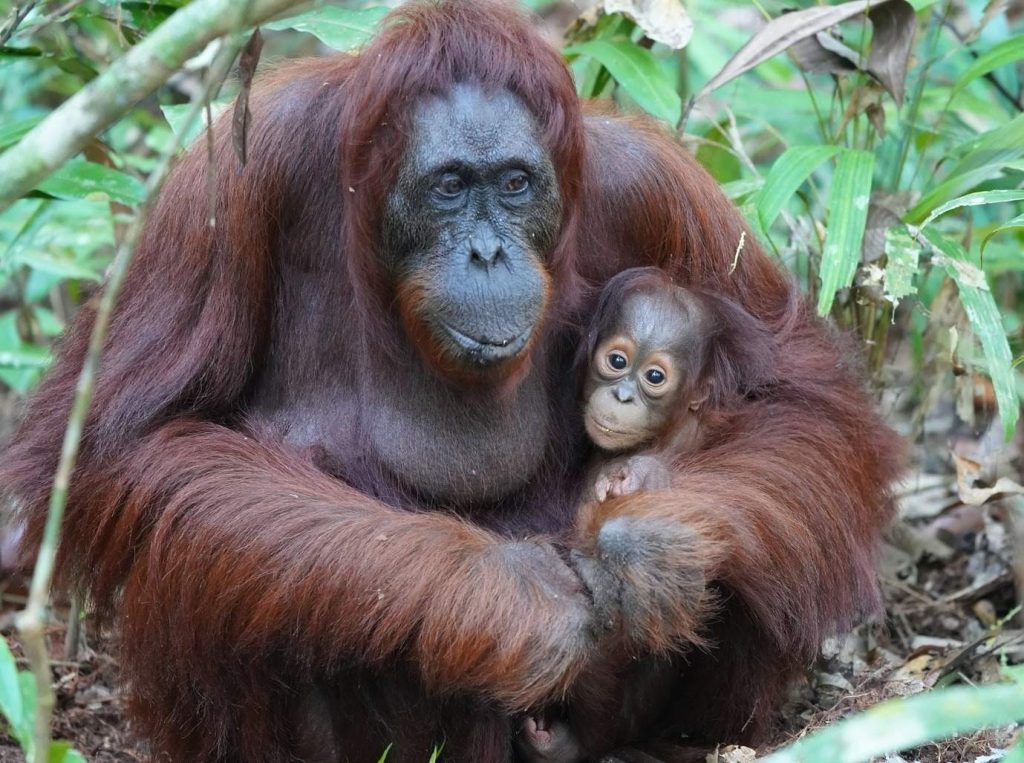
Orangutans are great apes that can be found mainly in parts of Malaysia and the rainforests of Borneo and Sumatra – two of the largest islands in Indonesia. Sharing 96.4% of human genes, it’s easy to understand why they are named Orangutan, which means “man of the forest” in Malay.
Recent figures have shown that between 1950 and 2010, the world lost 60% of its orangutan population. Having had a total population of more than 230,000 a century ago, the Orangutan population has dwindled drastically over the last three decades, leaving only about 104,700 individuals remaining in the wild.
Habitat loss due to deforestation is the main cause of this dramatic decline in wild orangutan population. Illegal logging and land conversion for palm oil production and agricultural expansion have resulted in the loss of over 155.867 square kilometers of forest within the last 3 decades, accounting for 61.5% of the orangutan’s suitable habitat. Because orangutans are absolutely adapted to life in trees, deforestation is no different from a death sentence for them.
Researchers have predicted that between 2010 and 2025, the number will continue to drop, and without concrete actions taken, 81% of the orangutan population recorded in 1985 will disappear by 2060. Due to the decreasing trend showing no signs of improving, Orangutan was listed as a critically endangered species on the Red List as of February 2016.
Harpy Eagle
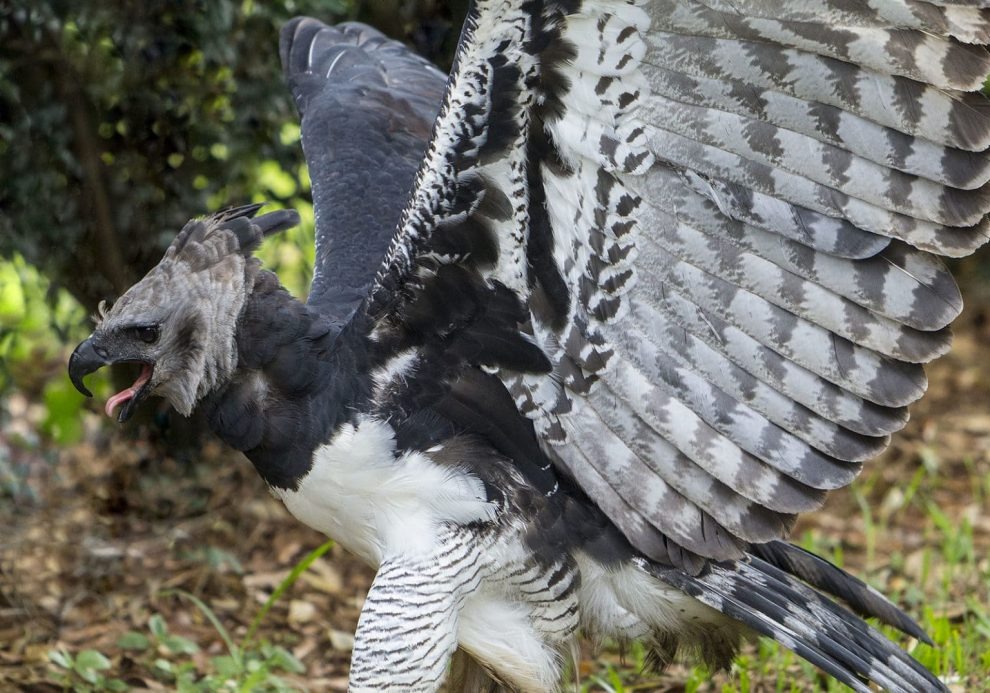
Harpy Eagle is one of the largest, most powerful eagle species in the wild. The habitat of the Harpy Eagle is tropical lowland rainforests, scattered across regions such as Mexico, Argentina, and South America, especially the Amazon rainforest.
In order to live and maintain the species, one Harpy eagle needs a forest territory of about 100 square kilometers. However, with the current state of continuous deforestation, especially in southeastern Amazonia and Central America, the habitat of the Harpy eagle is increasingly shrinking.
A lot of forests have been destroyed by wildfires, converted into agricultural land, or cleared for selective logging, resulting in negative changes in ecosystem health such as less prey or fewer nesting trees. These issues can cause the death of not only adult eagles but also their nestlings.
There are no exact figures for the number of Harpy eagles alive in the wild, but according to IUCN Red List, the global population of Harpy eagles ranges between 118,000 – 225,000 individuals (excluding nestlings). However, researchers believe that the Harpy eagle is already extinct in several regions where they were originally found, such as northern Central America as well as parts of Bolivia and Venezuela. If we don’t do anything to at least slow down the rate of forest loss, about 27% – 57% of the remaining Harpy eagles will disappear within the next 60 years.
Red Panda
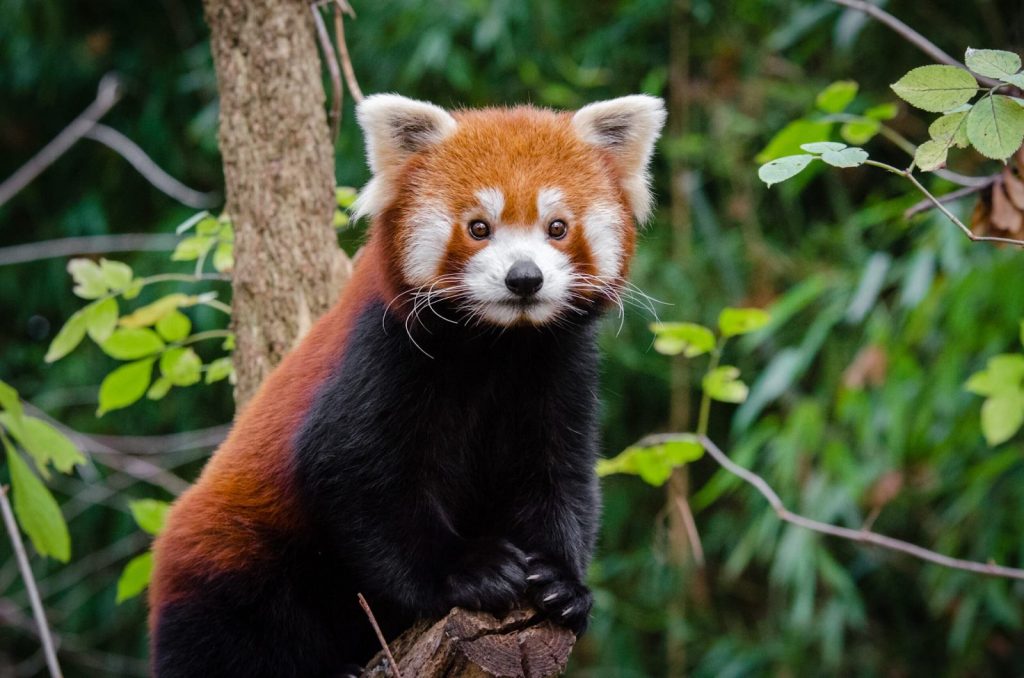
This adorable creature is native to the eastern Himalayas and southwestern China, and you can find them in many parts of Asia such as western Nepal, Bengal, southern Tibet, or several provinces in China. However, soon we won’t be able to see this cuteness in the wild, as according to the World Wildlife Fund (WWF), we only have fewer than 10,000 individuals alive, and it’s still decreasing.
Habitat destruction and fragmentation are the most serious threats facing red pandas. As red pandas live on montane forests, deforestation is causing severe damage to their habitat. During the last 3 generations (about 18 years), we have lost 50% of all red pandas in the wild.
The increase of human population has caused many forests to be cleared for living, terraced fields, or grazing. Since the 90s – 2000s, about 9000 square kilometers of red panda habitat has been destroyed, making it more difficult for red pandas to find bamboo to eat, as well as old trees to burrow and breed.
In addition to the direct impacts on the living environment, deforestation also increases the risk of landslides and facilitates hunting activities. This indirectly brings a lot more threats to red pandas, and that’s why they’re listed among the endangered species in the Red List.
Pygmy Three-toed Sloth
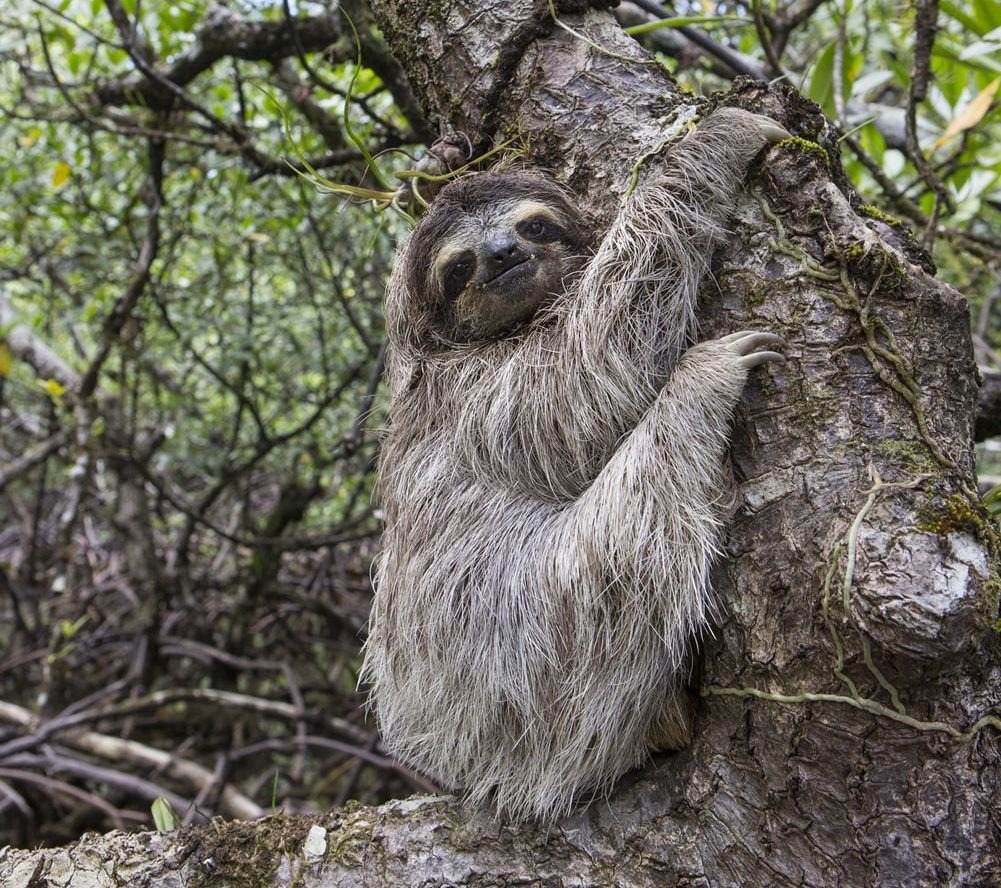
The pygmy three-toed sloth is endemic to Isla Escudo de Veraguas, a small island in the Caribbean. The main habitat of the pygmy three-toed sloth is red mangroves, but due to changes in the ecosystem, some individuals have been found living in the dense tropical rainforest deeper on the island.
Because of the difficulties in approaching pygmy three-toed sloths (mainly geographical difficulties), researchers are still unable to find any accurate up-to-date information on the population, reproduction, or lifespan of this species. Unfortunately, one thing for sure is that the number of pygmy three-toed sloths in the wild is rapidly decreasing.
Living mainly on mangrove trees, the existence of the pygmy three-toed sloth is being threatened by overexploitation and destruction of mangrove forests. Recent reports of pygmy three-toed sloth populations haven’t shown any promising results. We only have 48 individuals alive in the wild – such an alarming number compared to 79 individuals recorded in 2013.
Local people and visitors are tearing down the house of pygmy three-toed sloths for timbers and food. If the government and competent officials do not take any drastic action to tackle this problem, the pygmy three-toed sloth will soon turn from a critically endangered species into an extinction species.
Koala
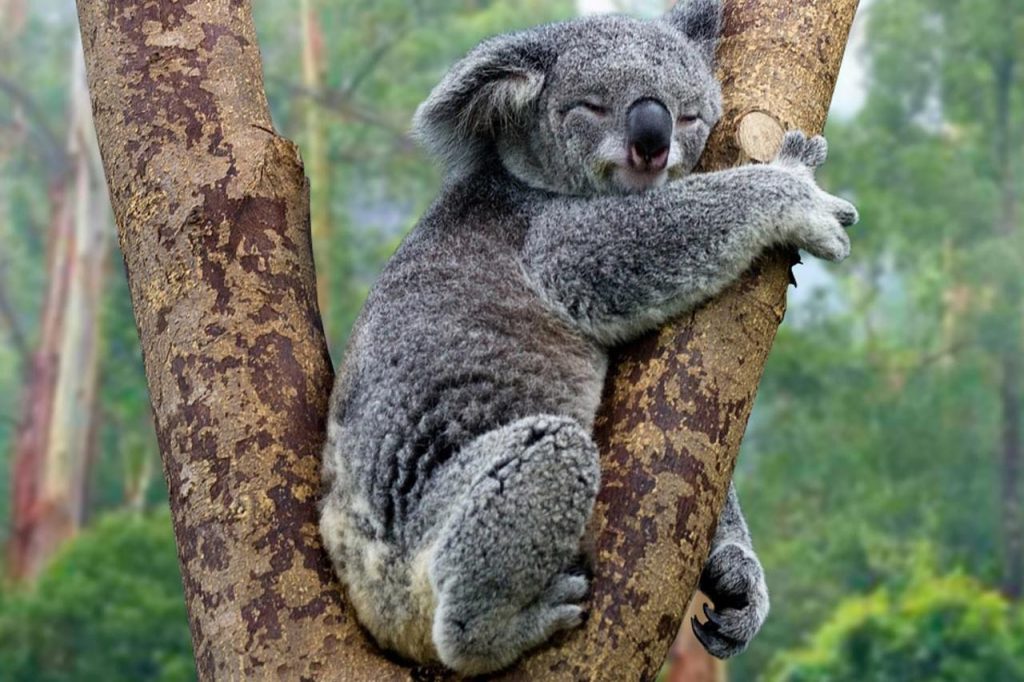
Koala bear is an arboreal herbivorous marsupial that lives mainly in coastal regions of Queensland, New South Wales, Victoria, and South Australia. With distinctive features in appearance as well as living environment, this species is considered a symbol of Australia. However, the latest data has pointed to failures in maintaining the koala population, bringing it closer and closer to the brink of extinction.
There used to be millions of Koala individuals living across Australia a century ago, but now only about a tenth of them remain in the wild. According to the Australian Koala Foundation (AFK), the current wild Koala population is around 80,000 individuals.
Forest loss – either manmade or natural – is one of the main threats that put Koalas in danger. In order to urbanize coastal areas as well as develop agriculture in rural areas, in 2000 alone, Australia sacrificed approximately 6000 square kilometers of forest. Along with wildfires, this has caused severe habitat fragmentation, shrinking the koala’s distribution in the wild by 50%.
WWF – together with related organizations – has nominated Koala as an endangered species. This is one of those drastic moves to avoid the extinction of Koala – which is predicted to happen by 2050 if no action is taken.
Bottom Line
The story of the link between deforestation and the loss of endangered species has been a hot topic for a long time. To address this problem, we first need to face the fact that wildlife habitats are being threatened by human deforestation activities. Highly aware of our responsibility in this mission, we Tenere – together with our beloved users – are contributing everything in our power to plant trees and conserve forests around the world.
2022 trees have been planted by Tenere and partners earlier this year to celebrate the new year, and we guarantee that planting projects will be further promoted in the future. We believe that no financial benefit is worth the sacrifice of what mother nature has bestowed upon us, and we know, a lot of people are also on the same page.

